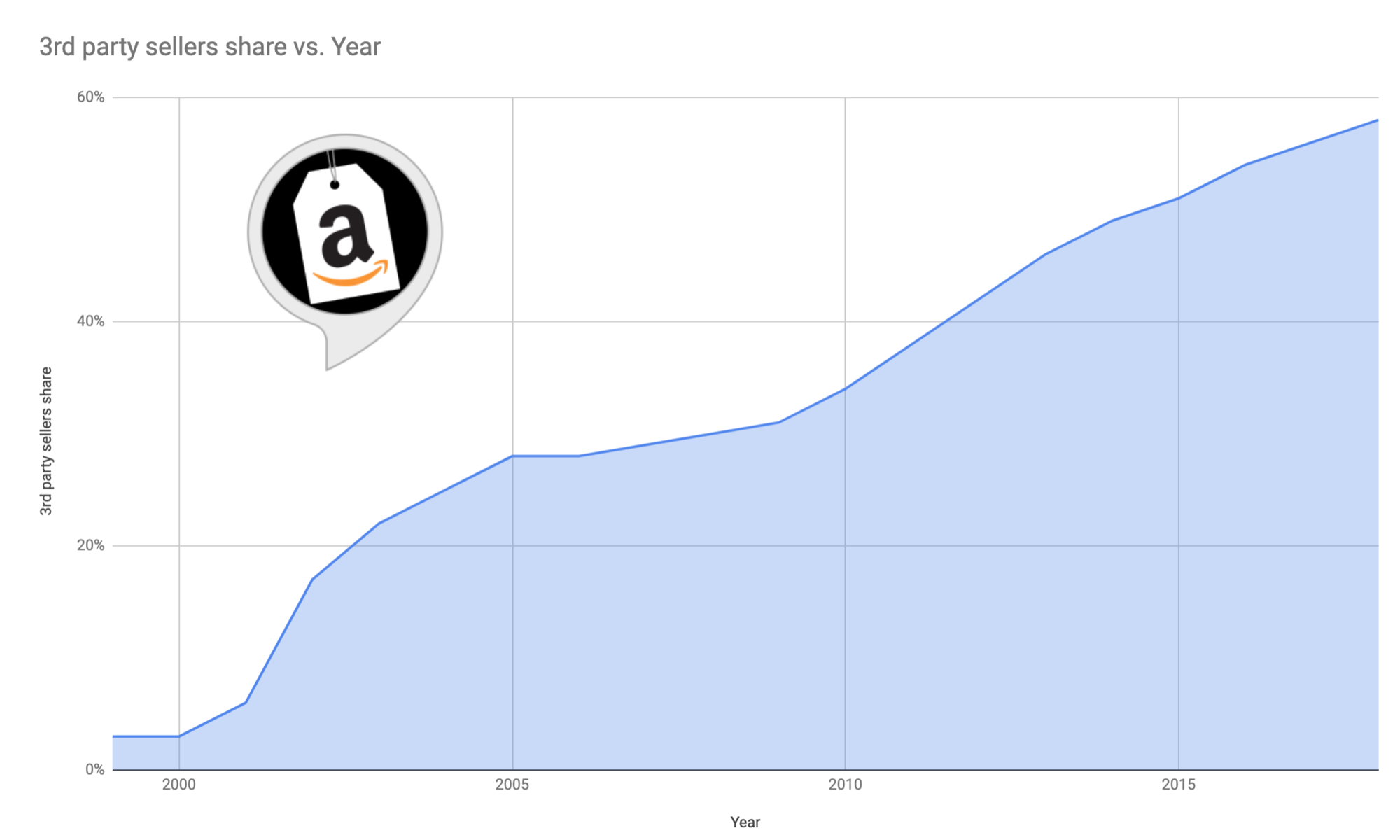Amazon third-party sellers represent more than 50% of Amazon's retail business
Jeffrey Bezos, CEO of Amazon, yesterday shared the annual letter to share owners where he has shown the share of physical gross merchandise sales sold on Amazon by independent third-party sellers, a percentage that reached 58% in 2018.

Jeffrey Bezos, CEO of Amazon, yesterday shared the annual letter to
share owners where he has shown the share of physical gross merchandise sales sold on Amazon by independent third-party sellers, a percentage that reached 58% in 2018.
Here the numbers:
| Year | 3rd Party Sellers share |
| 1999 | 3% |
| 2000 | 3% |
| 2001 | 6% |
| 2002 | 17% |
| 2003 | 22% |
| 2004 | 25% |
| 2005 | 28% |
| 2006 | 28% |
| 2007 | 29% |
| 2008 | 30% |
| 2009 | 31% |
| 2010 | 34% |
| 2011 | 38% |
| 2012 | 42% |
| 2013 | 46% |
| 2014 | 49% |
| 2015 | 51% |
| 2016 | 54% |
| 2017 | 56% |
| 2018 | 58% |
Jeff Bezos says independent third-party sellers are mostly small- and medium-sized businesses that are "kicking Amazon's first-party butt. Badly"
First-party business has grown from $1.6 billion in 1999 to $117 billion in 2018. In that same time, third-party sales have grown from $0.1 billion to $160 billion.
Amazon compares it's business to eBay and says that third-party sellers were able to grow with Amazon due to the tools Amazon provides: helping sellers manage inventory, process payments, track shipments, create reports, and sell across borders.
This month Amazon announced the introduction of a minimum sales fee in Europe and changes on seller fees.

